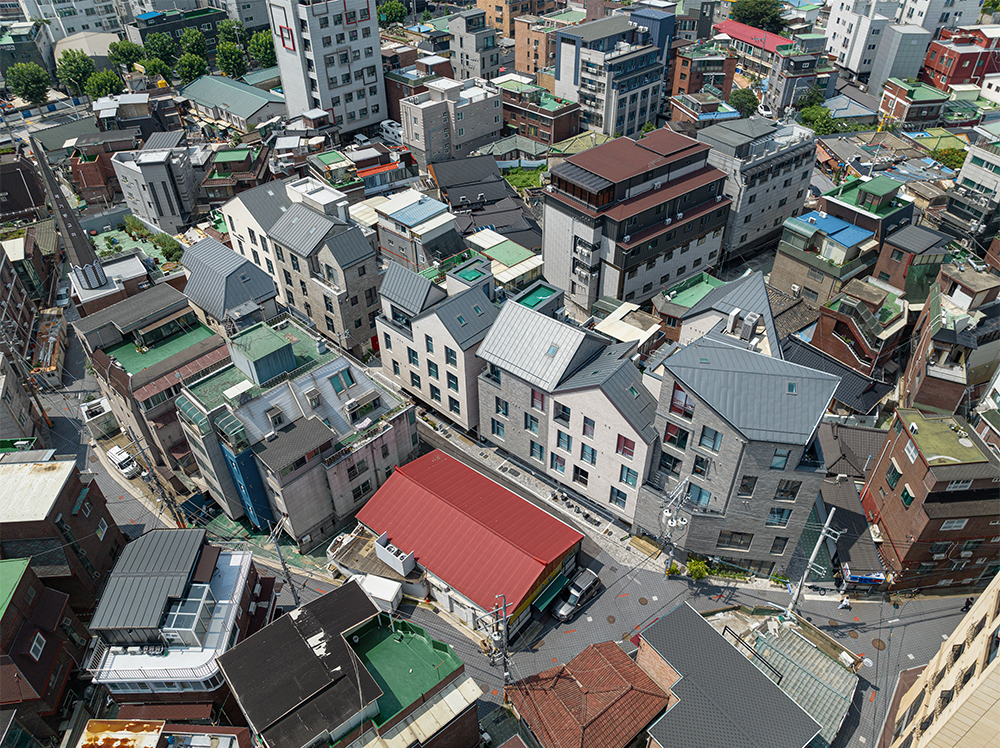The winners of the 13th Architizer A+Awards have been announced! Looking ahead to next season? Stay up to date by subscribing to our A+Awards Newsletter.
With a population density of more than 42,500 people per square mile (16,000 people per square kilometer), Seoul ranks among the top 100 global cities for population density. Home to over 26 million inhabitants, the South Korean capital is a vast, sprawling megalopolis that evokes as many images of ultra-modernity as it does historic landmarks such as Gyeongbokgung Palace and Bukchon Hanok Village.
In reality, most of the urban area is neither world-leading advanced architecture and design, nor an ancient protected site. Jegidong, the 5th District, is a prime example of what that means — a place that was stuck in the latter half of the 20th century while many corners of the municipality redeveloped and reconfigured to suit the changing pressures of our post-millennium reality. No longer fit for purpose, with narrow streets struggling beneath the weight of traffic, and mid and low-rise buildings falling short of the capacity needed to cope with a rapidly rising number of citizens.
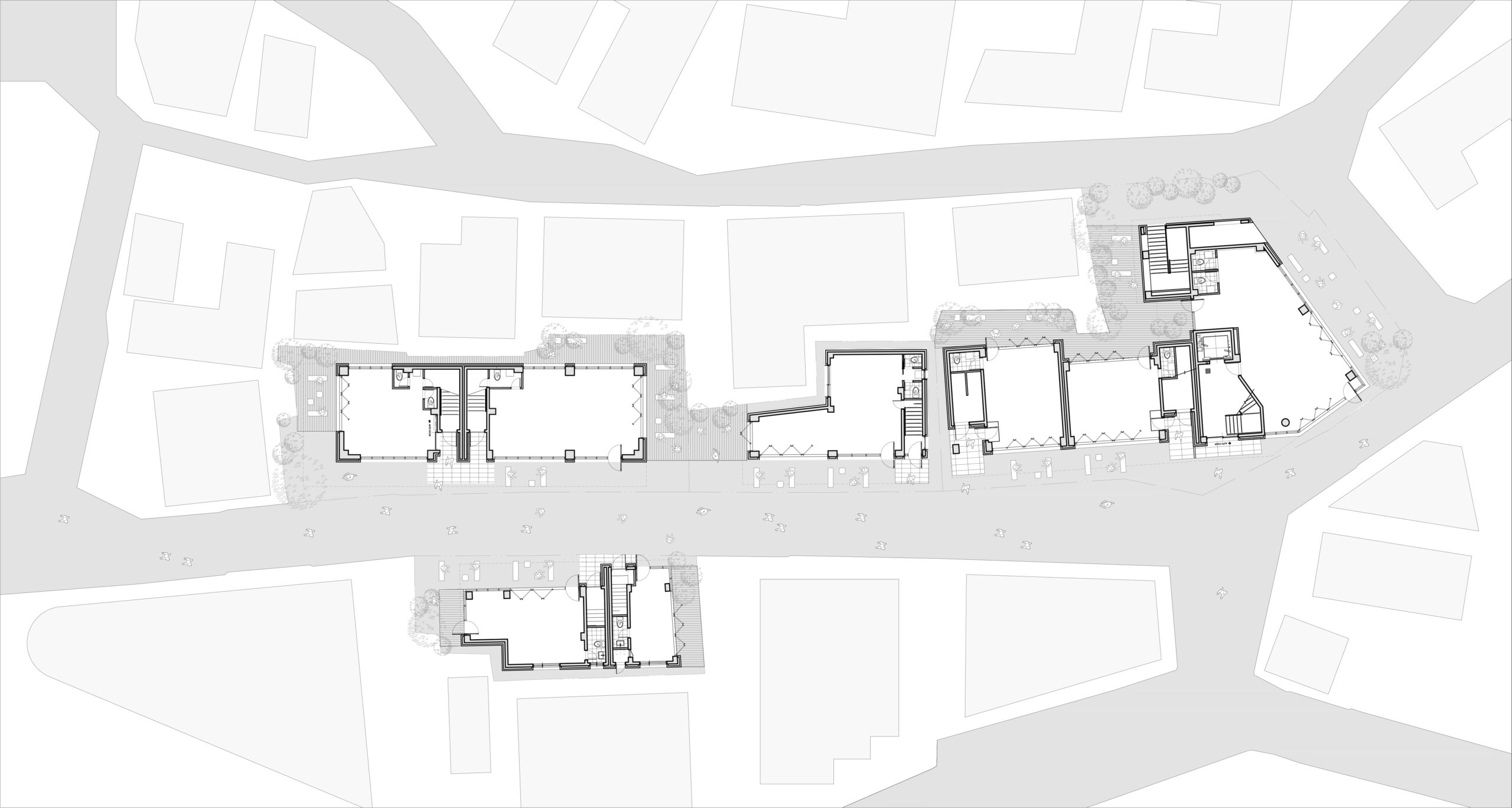
Jaegi by Urban Agency, Seoul, South Korea
A number of designs were drawn up for major overhauls of the neighborhood. And, like so many blueprints of this kind, a lot of money was spent on bureaucratic processes which, in the end, led to nothing. These proposals were effectively ‘tabula rasa’ — conceived without any real ideas to back them up. As a result, finance was difficult to come by and investors in short supply. The most recent proposition was finally shelved for good in 2018, at which point it became clear just how much cash and time had been wasted on false starts.
Then, something remarkable happened. Eight members of the local community decided enough was enough and pooled their individual plots on which outdated structures stood. No single site was big enough to house the scale of project needed to make an impact on the area, but once combined in a collaboration with Urban Agency a mixed use development has emerged. Comprising 80 studio apartments primarily aimed at students enrolled at the nearby Korea University, Jeagi also boasts ground level units including hospitality businesses such as a patisserie, bakery, cafe and organic pet food store. Elsewhere, galleries and a designer lighting shop have also opened.
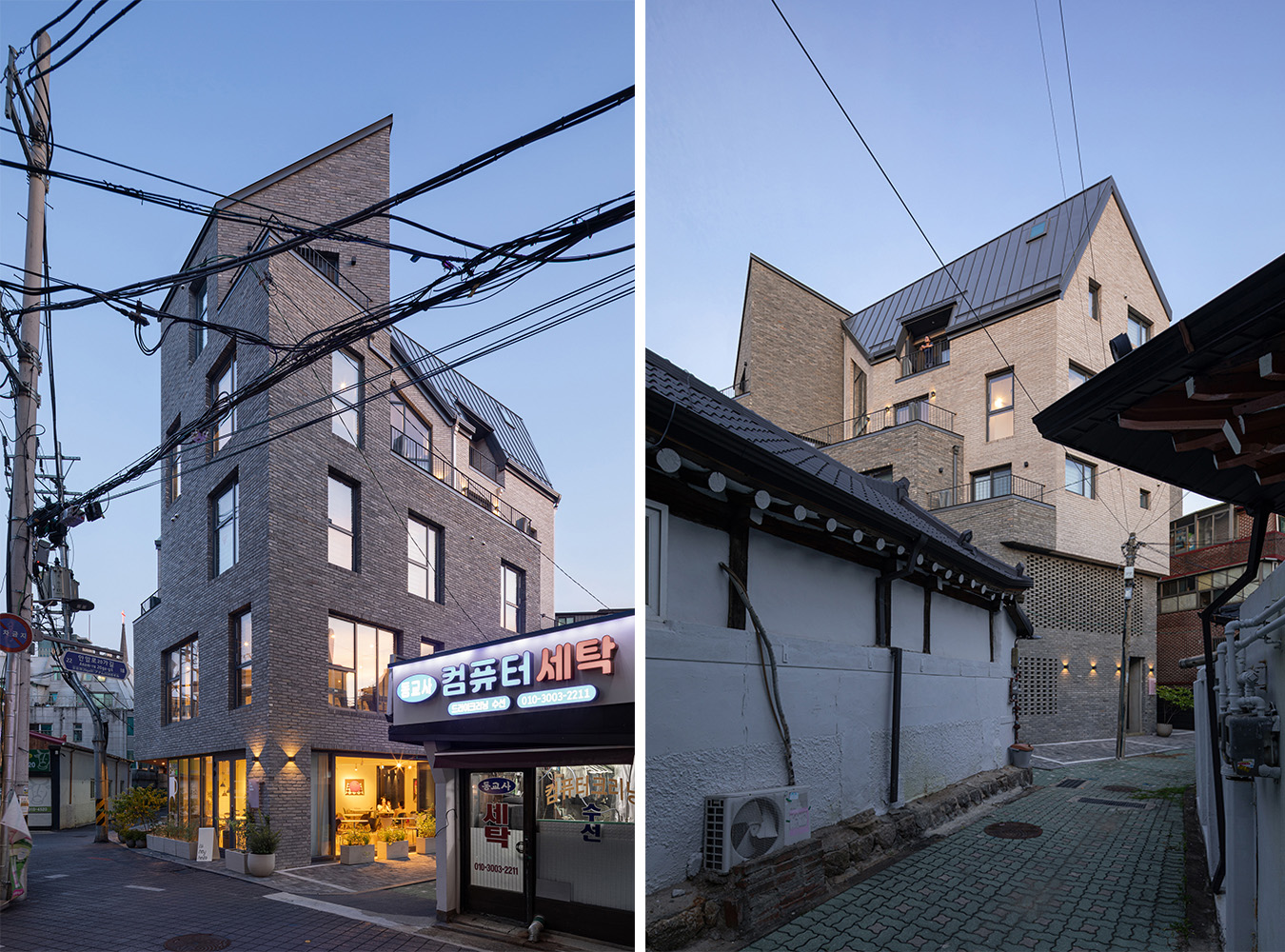
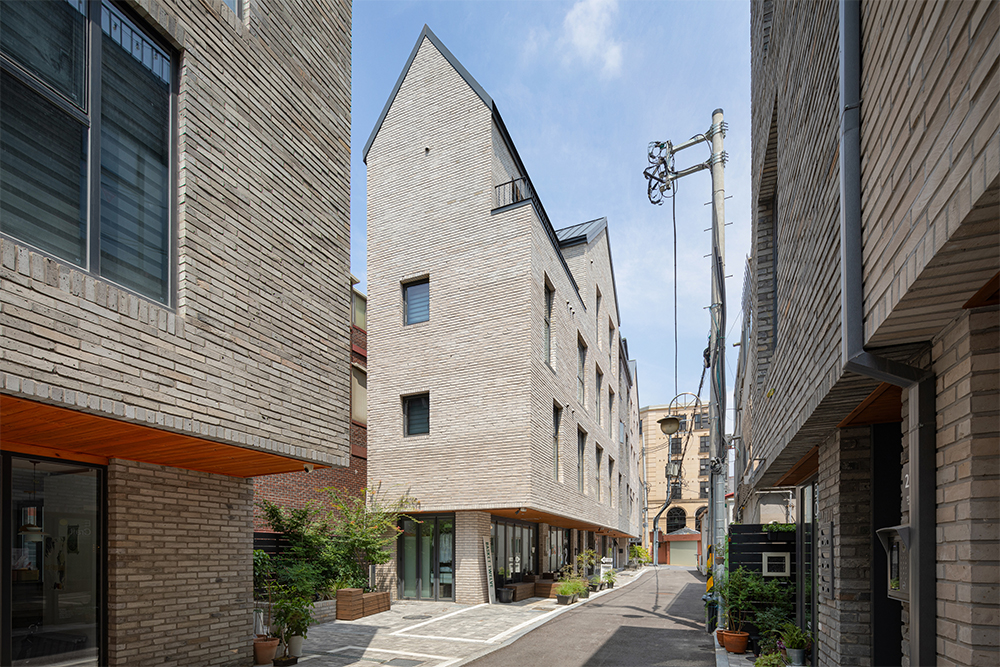
New buildings pay homage to traditional architecture in Jaegi by Urban Agency, Seoul, South Korea
Shared amenities such as communal leisure and cooking rooms, study zones and roof gardens accentuate the focus on bringing people together and pushing back against more siloed urban design principles. While not in itself revolutionary — there are countless examples of this approach, particularly within buildings that are predominantly made up of rental homes —the development takes that concept and runs with it from top to bottom. Every aspect of the project is about emphasizing community at a time when South Korea, like so many countries, is asking some big questions about what future society will look like.
Collectivism in action, the individual buildings which form this renewed district within a district are aesthetically coherent but individually identifiable. Brick-clad façades nod to traditional row houses that defined many parts of Seoul in the past, space between has been transformed into public realm which is open to anyone. Areas made for shared experiences, facilitated not only by a shared vision but also by a case study for how small scale landowners with strong connections to place can work together to bring that location into the modern age and still maintain ownership.
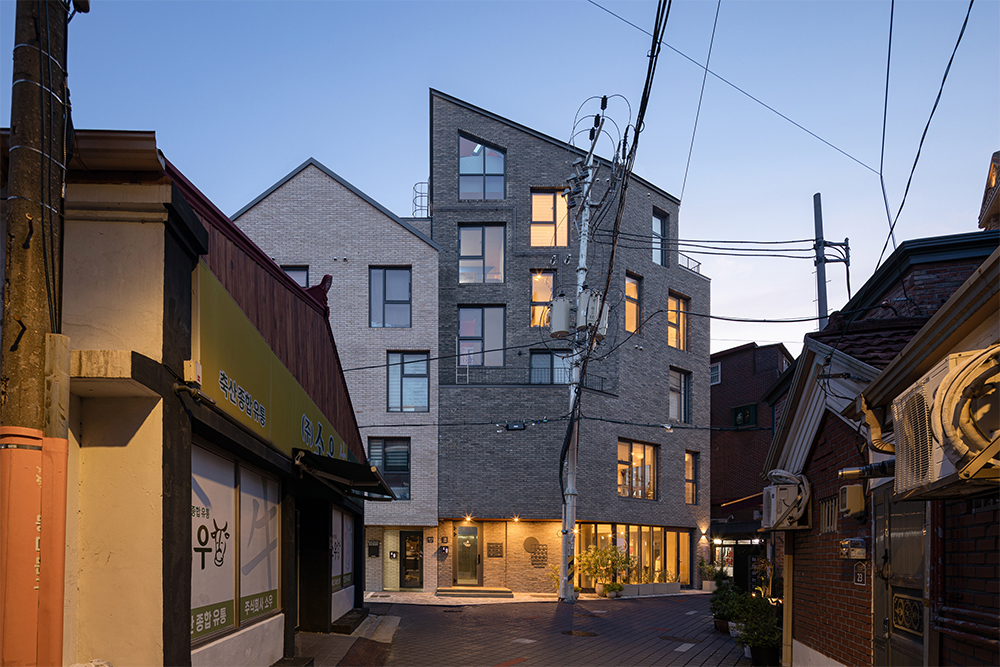
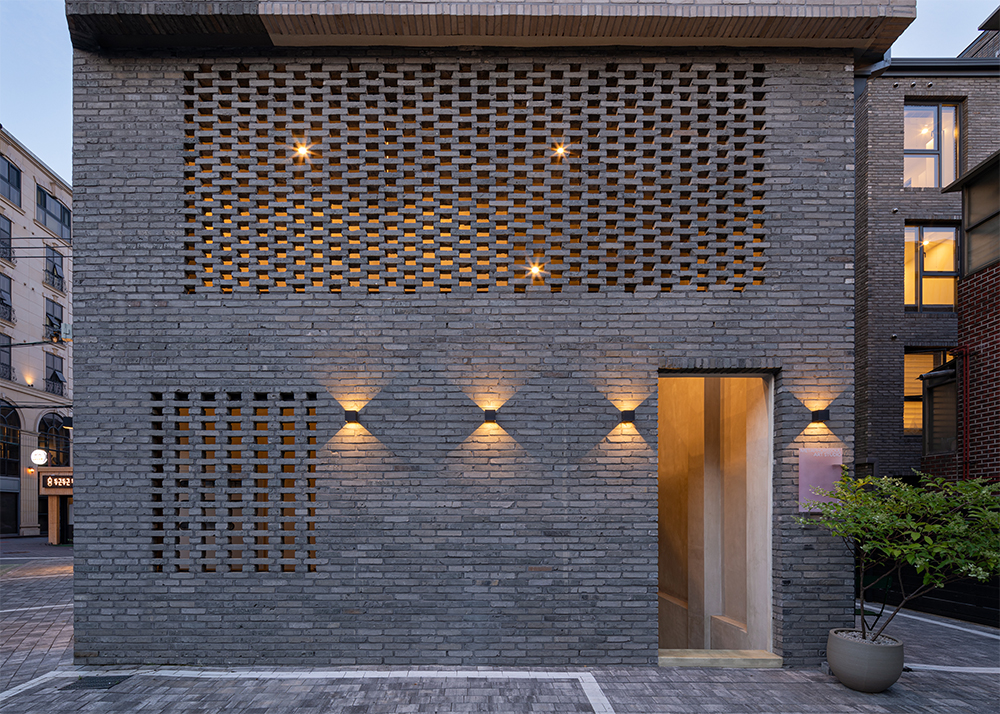
Jaegi by Urban Agency, Seoul, South Korea is made up of eight buildings which are coherent but individually designed.
It’s a model that speaks to the universal and increasingly urgent need for new homes and commercial addresses in already densely built-up urban landscapes which have already been overly-developed. More so, it does this without resorting to the the kinds of fire sale we are used to seeing in so many cities today. One that has led to homogeneity and little tolerance for difference when one developer chooses to maximize return for money spent on turning over, and turning around, a large collection of blocks and streets. All of which raises one question: Are we likely to see this practice become more commonplace as more and more districts demand modernization?
Yes and no. Probably. While the factors that led to Jaegi are specific to where Jaegi is, emphasizing how context is once again beginning to have the greatest influence over architectural planning, it would technically be possible to repeat this elsewhere in the world. The only thing we really require is parties which are willing and able to cooperate in such a way. And that can only really happen when there is either a financial benefit from that effort or deep-rooted emotional investment in improving a place. Although, in all honesty, the ideal is probably a combination of the two.
The winners of the 13th Architizer A+Awards have been announced! Looking ahead to next season? Stay up to date by subscribing to our A+Awards Newsletter.

